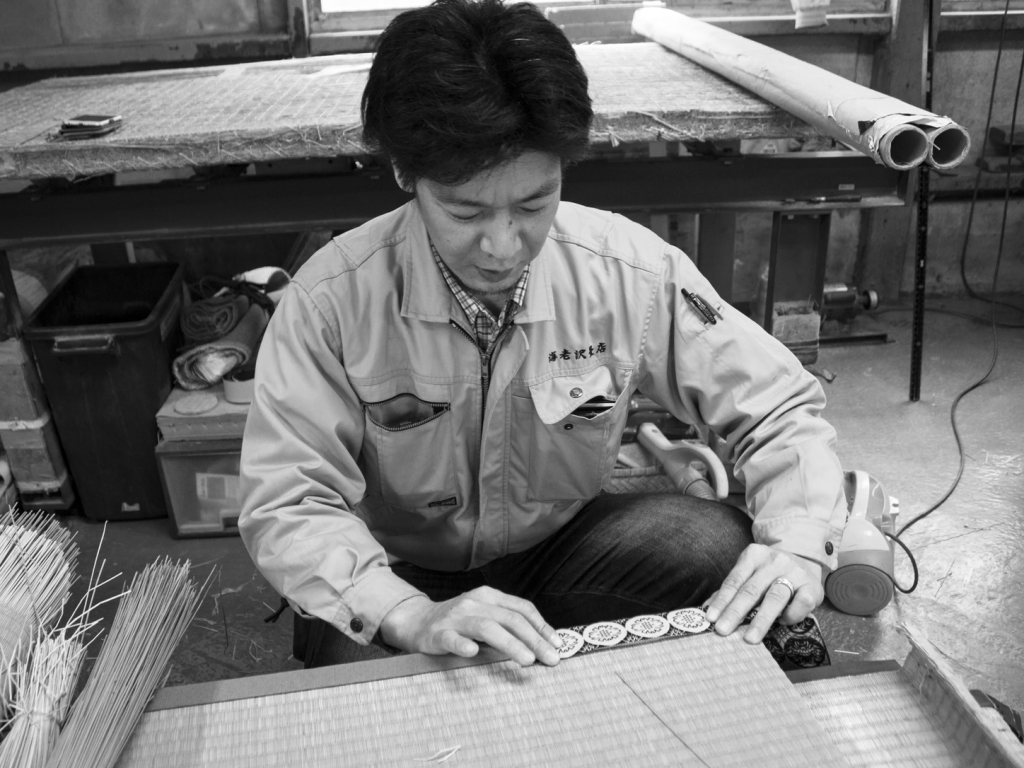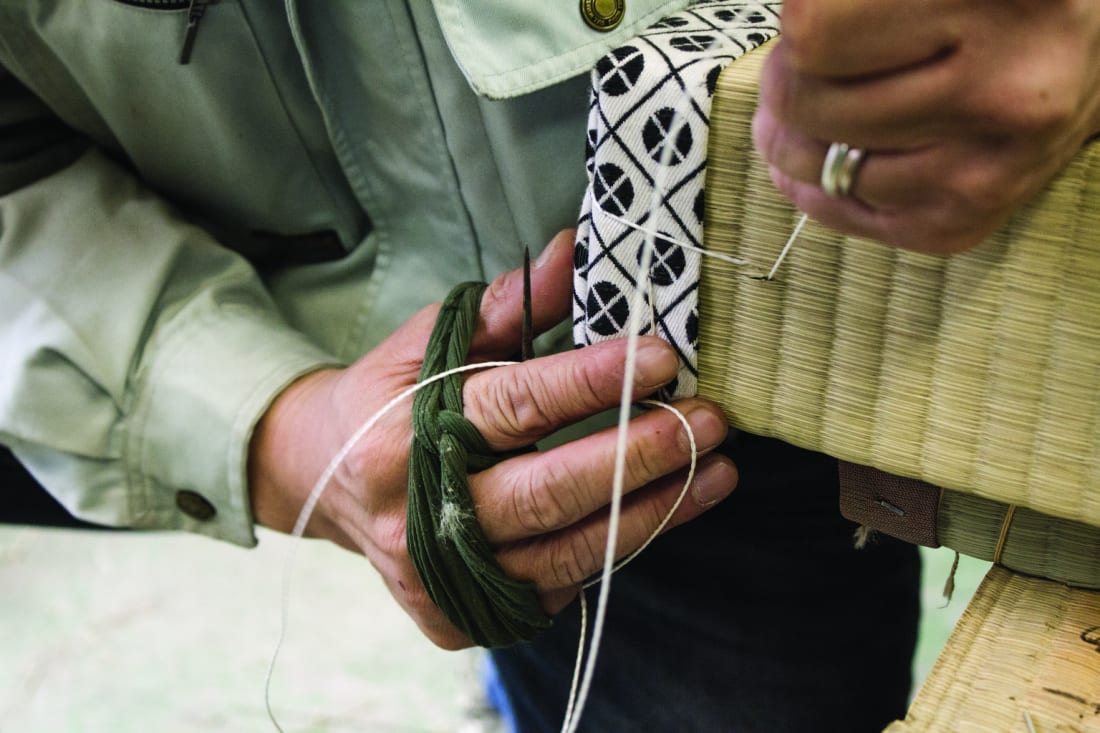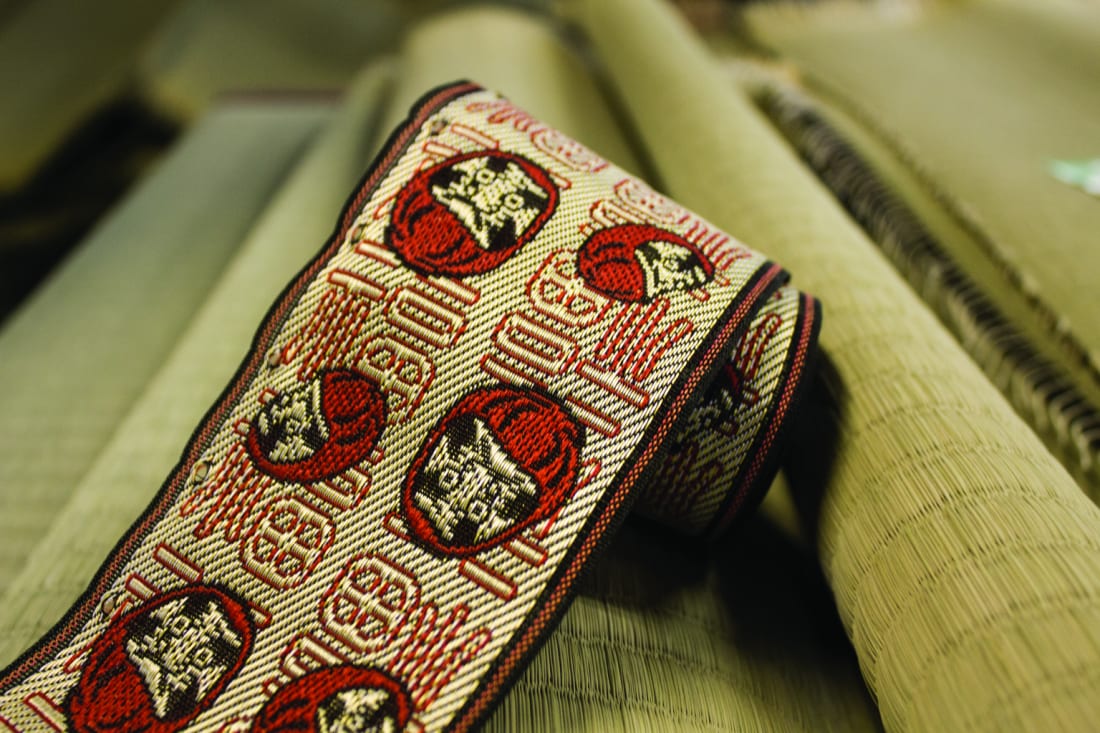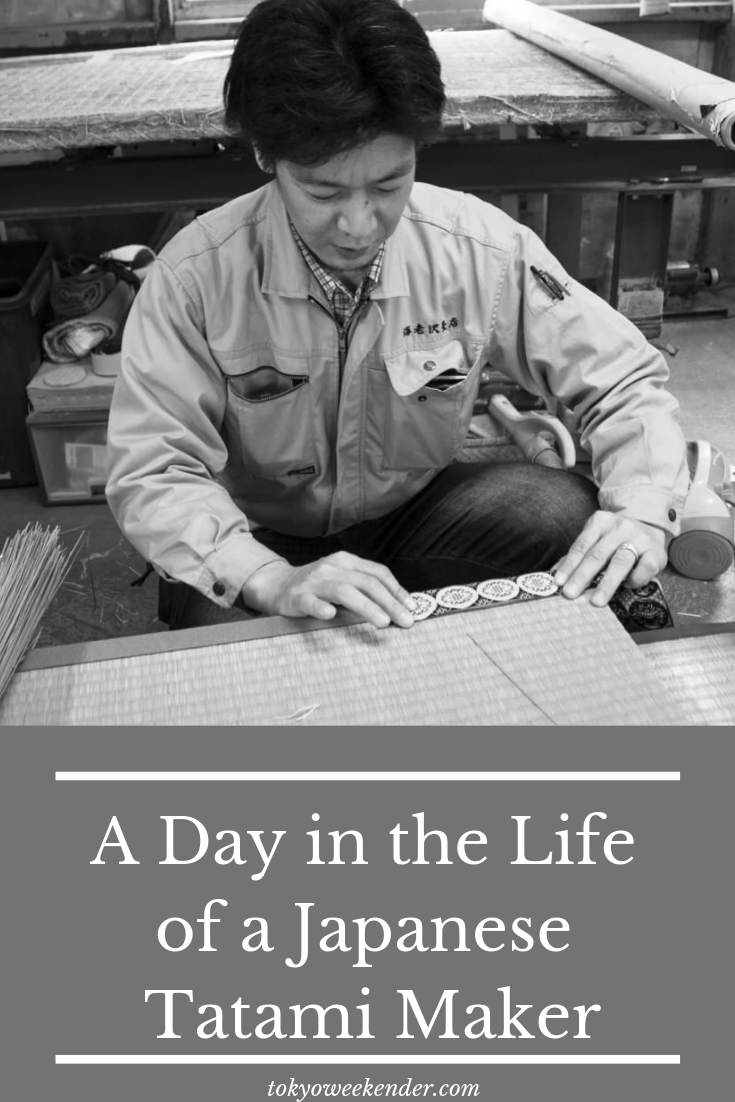Many of us have taken off our slippers to shuffle barefoot across the soft, cushioned floors of a tatami mat-covered room at some point in our lives. Although this traditional flooring is disappearing in many households, it’s still an intrinsic part of Japanese culture. We spent the afternoon with Tatsuya Ebisawa, a fourth-generation tatami maker, and tatami craftsman Yasuaki Hanazaki to learn more about the work that goes into making this unique type of flooring.
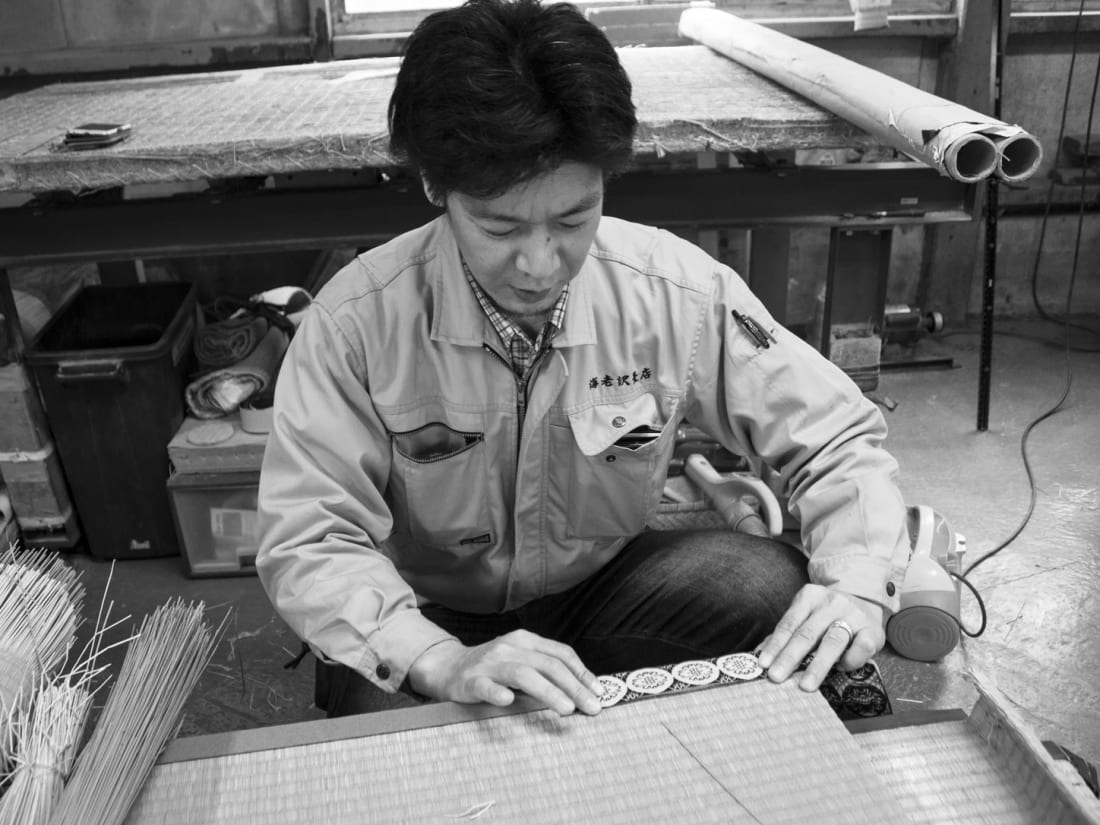
Tatsuya Ebisawa, a fourth-generation tatami maker
What is your typical day like?
Ebisawa: Generally, one of us will visit clients in the morning to deliver newly made or repaired tatami mats. Or, I’ll measure tatami for installation and have meetings with clients. We only need one person to run the machines [making tatami] so someone will stay on site with the machines and someone else will make the deliveries. We probably change tatami at 300 to 400 properties a year. These days, most properties are apartment buildings, so we go there to change tatami mats when a tenant leaves, before the new tenant arrives.
The only work we still do by hand is sewing the borders [called heri] on tatami mats for temples. The patterns have to align exactly right when laid out next to each other, which is a challenge since everything depends on the size of the mat and where it’s placed. It’s quite challenging work, even for a professional.
Why did you choose to do this job?
Ebisawa: Well, I’m a fourth-generation tatami maker. My great-grandfather started this business. At first I wasn’t interested [in succeeding the business], but when I tried it out, I found it was a lot of fun. I’m so glad I did, because I really enjoy it.
Hanazaki: I was 15 when I started, and at first it was like a form of education. Customers would tell me to read books or teach me things – they were a big influence on my development as a young adult. It was a kind of social education – not like what you’d get in school. I’d be scolded if I did something wrong and have to apologize, but I was also gently guided on how to do things right. Customers would help me and praise me when I did better. It was fun and I’m so grateful for that experience. It was something I could make a living from and still learn.
What’s the most important aspect of being a tatami maker?
Hanazaki: Trust and communication. Back in the day, most of the work was done at the customer’s house. We brought everything we needed and got to work in the garden. Sometimes the customer left the house and asked us to sign off on any deliveries that came. They would even give us their personal hanko stamp for that purpose. Because we worked inside people’s homes, we were privy to a lot of private information. We used to be witnesses to families’ stages in life. People would order new tatami mats if there was a birth of a child – to celebrate and welcome the new family member home – or when a grandparent died, for a fresh start.
Ebisawa: Also, I believe our customers have a big impact on how we develop as craftsmen. Their high expectations help us improve – they believe we know everything about tatami. That’s why we can’t say that something is impossible. If I can’t do anything, I look into it and experiment. Sometimes I ask other tatami craftsmen – my peers, my seniors, and even my juniors. We often have idea exchanges to improve our skills.
“You can’t see people’s joy or pain from the outside. Go inside and you can see it on their tatami”
What’s the best part of the job?
Hanazaki: Being a part of people’s lives and seeing it firsthand in the weave of the tatami. You can’t see people’s joy or pain from the outside. Go inside and you can see it on their tatami. It’s like a canvas. Each lifestyle affects the tatami differently, and people paint their lives on it in the way they use it. In that way, there are no two tatami mats that are alike. Someone who has tatami in a tea ceremony room will wear the tatami completely differently from someone who uses their tatami room as a family room.
For example, there was a woman taking care of her 90-year-old bedridden mother-in-law. When the mother-in-law passed away, they ordered a new tatami. On the old one, you could see the outline of her body where she lay – she was bedridden a long time, so the tatami was affected and rotting slightly, because it’s a natural material. Of course, it’s sad that she passed away, but she must have led a happy life until the end because she had people around her taking care of her. She didn’t die alone. It’s quite heartwarming. Being able to see that intimate aspect of how people have lived their lives is quite touching. But that has changed now because so few places have tatami rooms.
Why is tatami so great?
Ebisawa: Tatami is a part of Japanese culture, but I think it would work well abroad, too. In fact, I know some people abroad who use it. More than anything, I’d like people to appreciate its many benefits. If you have it at home and experience it firsthand you’ll find something you like about it. Igusa (the soft rush used as the tatami mat surface) contains vanillin, and the vanilla fragrance supposedly has relaxing properties.
Hanazaki: When you go to a temple, you’ll notice the smell of tatami combined with incense and the trees around the building. It’s relaxing, kind of like aromatherapy. They didn’t have that word back then, by they must have known about tatami’s calming effects.
Ebisawa: You should really walk on tatami barefoot. It’s more relaxing and apparently the stimulus is good for your body. It also helps absorb excess oils from your feet. Someone told me they cured their athlete’s foot, or at least improved it, by walking on tatami.
Hanazaki: It also functions as sound insulation because of the thickness and cushioning effect.
What’s next for tatami?
Ebisawa: We want to make it more artistic and individual. We want to create different sizes and shapes. We offer vinyl tatami, which is easy to clean and hassle-free, and comes in 50 different colors. We did a whole room in blue tatami recently. We can also do designs, like dolphins. White tatami is also fun. Since the customer is our focus, the only real limit is their imagination. We can even print photos onto tatami! You can put your own face there, or that of your idol! We also make accessories from leftover materials so they don’t go to waste. They make great gifts and give off that wonderful tatami aroma even if you don’t have the space to put down tatami on the floor.

